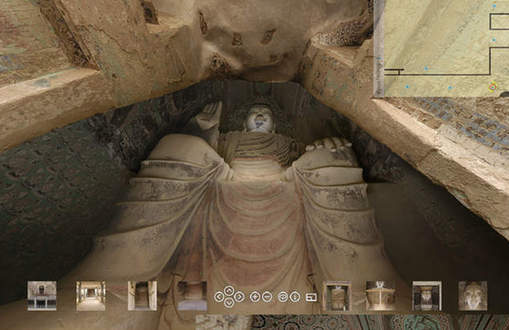Digital technology helps preserve Mogao Grottoes
 0 Comment(s)
0 Comment(s) Print
Print E-mail China Daily, July 23, 2016
E-mail China Daily, July 23, 2016
Dunhuang Academy now uses high-resolution cameras to capture the images of the murals. [Photo provided to China Daily]
Slide projector
In the 1950s the State Bureau of Cultural Relics received an old-fashioned slide projector from Poland as a gift, Ma says. Zheng Zhenduo, then head of the bureau, gave the projector to the Dunhuang Academy.
Ma recalls that the projector was still being used in the 1980s. If artists at that time wanted to create a facsimile of a mural they would first go to the cave to use rulers to measure its dimensions and record the information in notebooks.
Photographers from the photographic section that later became the digital center would take 10 black-and-white photos of the mural from beginning to end.
"I would get the negative films of the 10 photos, and then I took the projector and the films to bigger caves like No 61 or 98," Ma says.
After setting up a board and spreading two layers of Chinese art paper on it, Ma turned on the projector and put the films on it. The shadow of the films were then projected onto the paper. The size of the shadow could be adjusted according to the size Ma measured in the cave.
With the mural's details on paper, Ma was able to trace the lines-even broken or unclear ones-and draw them on the paper, because "we had to take down all the information", he says.
However, after the projector had been on for 30 to 40 minutes the films would become too hot and would become deformed. So he then had to take a break to wait for the projector to cool and the films to return to their original state.
Ma would later go back to the caves to see what lines had been completely missed out or were incorrectly shown.
Usually, it would take an artist a year to do the first draft and revise it, and another year to color it.
"The more important thing is to understand the spirit of those murals and how their unique style developed in different historical periods," Ma says.






Go to Forum >>0 Comment(s)